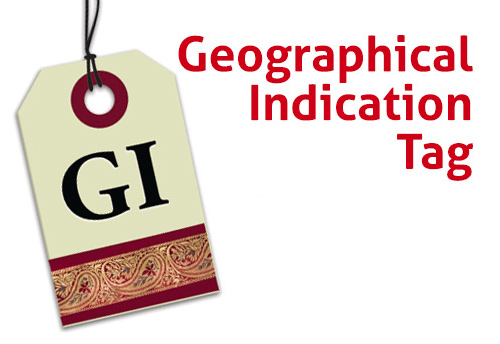Geographical indication registration in T.Nagar Chennai

Geographical Indication Registration means the intellectual property which defines the goods as originating in the territory of the country. It may also originate in a region or a locality in the territory provided quality or reputation.
It is one of the intellectual properties. Any producer who meets the standards set by the GI owner can use GI. Few examples for GI are Basmati rice, Kanchipuram silk saree, Nagpur orange, Coimbatore wet grinder. In India geographical indications are protected and governed by Geographical indications of goods (registrations and protection) Act 1999.
Procedures for GI Registration
The procedure for GI Registration application is first is Filing of application, then preliminary scrutiny and examination, then comes the Show cause notice, publication in the geographical indication journal, opposition to registration followed by registration , renewal, then additional protection to notified goods and then appeal. The registration process can be done online. The applications need to be checked whether they come with the definition of GI under section (2) (e). The applicant must have an address for service in India. The application is generally filed by a legal practitioner and by a registered agent.
Geographical indication tags

Geographical indication tags are names or signs used on the products which provide rights to the people. In India totally 344 products carry that indication. People are giving unique products; maybe in terms of nutritional value, in terms of colour, or attractiveness you offer the product to the international people or the global citizens.
The sign must identify a product based on its origin and also the qualities. Reputation of the product should be essentially due to place of origin. In GI registration Geographical indication tags are needed for the protection of knowledge and community rights. GI is used For the market recognition, premium price and for rural development.
How to Protect GI?
There are two main ways to protect GI:
Sui generis system and collective marks. Here they use the fact that they set up rights for collective use by those who comply with defined standards and methods focusing on methods of business.
In GI generic terms are referred in which the land is donated where the product originates and it has become customary for the product. The homonymous geographical indications identify products originating in different places. The significance of geographical indications is due to the existence of another homonymous indication its use would be considered potentially misleading the consumers. This happens with regard to the product’s origin. The main condition is that the ‘good’ identified by GI should have a geographical link. The quality origin associated with geographical origin. The following features do not support GI Registration. The sign that is likely to harm religious beliefs is also the sign which falsely represents the geographical origin, region or locality. And the sign that falsifies the qualities and uniqueness in the application. Also the signs that do not qualify under applicable GI law and the sign which has conflict with prior marks.
Value of Geographical Indications

A geographical indication is the public property belonging to the producers of the concerned goods. So it cannot be confined to the matter of assignment, transmission, licensing, pledge or other agreement. GI is granted for a community.
When GI registration happens it gives you legal protection and also prevents unauthorised users. It promotes economic prosperity of the producers and boosts the export. It plays a major role for the consumers to make major decisions on GI products. If such goods are available the consumers can pay the amount without bargaining so that the consumer is aware of the significance and the popularity of the GI goods. Also for a developing country like India, GI helps in rural development and also saves local natural resources. Also helps in preservation of cultural identity. The geographical indication is valid for 10 years and it can be renewed from time to time. Even though the registration is not compulsory. GI registration affords better legal protection to facilitate action against the infringers.
Infringement in Geographical Indications
Let us discuss infringement in Geographical Indications. It is explained that infringement occurs in which the goods are produced in other places rather than its original place. By the (Indian) Geographical Indications of Goods (Registration and Protection) Act, 1999, falsification of a Geographical Indication will carry a penalty. Also it carries the imprisonment for a term which may not be less than six months but may extend to three years and with a fine which may not be less than Rs .50,000.
Appellation of origin is a kind of GI. They both require a link between the product which they refer to and its place of origin. The quality of the product protected as an appellation must be exclusively essential from its geographical origin. The GI enables the rightful user to prevent the misuse by the third party who says it has attained GI Registration standards but not. People may also bluff to the people that it has GI and sells very low quality products to the people.
Protecting the value of Geographical Indications

Non-agricultural producers who wish to protect a GI in the EU need to file for protection in each country where it is available. They rely on other tools such as trademark registration, protection, litigation, or action via administrative authorities in case of unfair commercial practice or consumer deception. A geographical indication is a sign used on products that come from a particular geographical location and which possess a quality, reputation or other characteristic linked to that location. It is accepted universally. Unlike the other intellectual property rights, GIs are collective rights; which means there is no “owner” as such, as there is with a trade mark.
Any trader who can comply with the provisions governing the use of the GI (including any registration conditions) is entitled to use it. The economic function of geographical indications is to protect the goodwill of the products to which they relate. It can be conveniently conveyed as “tendency or likelihood of a consumer to repurchase goods or services based upon name or source of goods or services.” GIs serve to protect intangible assets such as market differentiation, reputation and quality standards. They enable the linking of a specific product to the territory from which it originates.
So Geographical Indication registration is an important trading tool and it must be certified as early as possible. We Solubilis helps you to acquire GI Registration in Chennai in a timely manner.